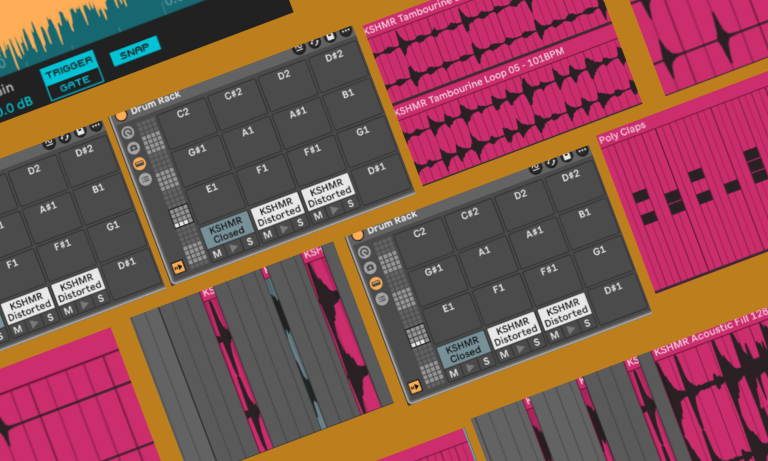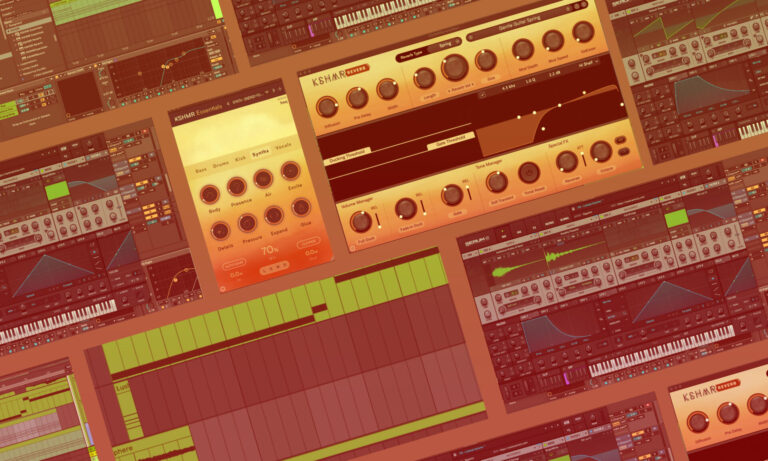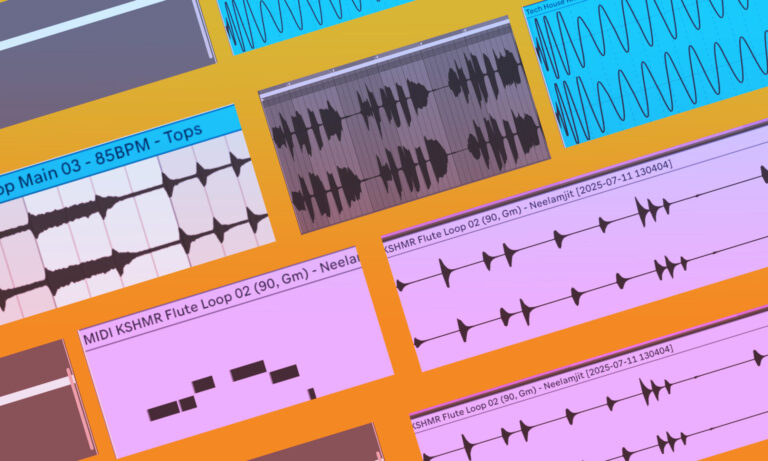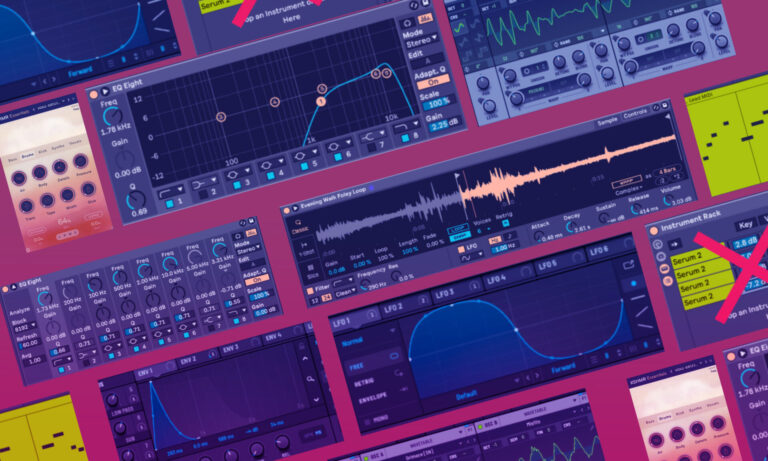- Transients decide if your groove hits or flops. No sharp attack, no real groove.
- Transient shaping gives you control where EQ and compression just guess.
- Shape your kick, snare, and hats first. Make them cut and let everything else sit back.
- Want a 3D mix? Control the transients. Sharper means closer, softer means further, no reverb tricks needed.
- Micro moves make macro changes. A 5–10% tweak to attack or sustain can flip the whole feel.
- Don’t rewrite a bad loop. Five minutes of transient work can save a dead track without touching the MIDI.
- Context, context, context. If it slaps in solo but dies in the mix, start over.
Transients are the initial few milliseconds of a sound—the initial spike of energy your ear locks onto. They define how a groove feels, where a hit lands, and how present or distant a sound appears in the mix.
When producers discuss “punch,” “snap,” or “tightness,” they are typically referring to these transients.
Most producers over-rely on EQ and compression to get clarity out of their drums, but neither gives you the level of control that transient shaping does. It’s one of the fastest ways to bring contrast and realism into a flat-sounding loop.
This piece breaks down where transients matter most, how shaping them affects groove and space, and how to approach it with intention and restraint, all while showcasing how plugins like KSHMR Essentials streamline this entire process into a few dials.
So you spend less time tweaking and more time finishing music.
What Transients Are and Why They Matter

It’s just a few milliseconds, but it’s one of the most important things in the entire mix.
We tend to think of drums in terms of volume or tone, but what makes a groove feel alive is how those sounds work over time (time being a fraction of a millisecond, but time nonetheless).
- Tight, clipped hats will give your groove a push forward.
- A snare with a softened transient will blend deeper into the pocket.
- Transient heavy kicks knock the speakers, and a softer kick thumps more like a heartbeat.
Transients shape not only how loud something feels, but also how close or far away it seems. That’s why subtle changes to the attack or sustain of a hit can completely shift the groove, even more so than the pitch or gain staging.
This is especially true in busy arrangements.

When multiple drums are playing at once, transient shaping helps the most essential hits pop.
A hat might sound fine in solo, but once the whole mix is playing, it either vanishes or becomes masked. That’s where transient shaping becomes most useful. It gives you precision—sharpness when something needs to cut, softness when something needs to sit back.
These are micro-adjustments, but they shape the macro feel of the track. And unlike EQ or compression, you can make these changes without coloring the whole signal or wrecking its tone.
Which Drum Elements Need Transient Control?
Not all transients should be pushed forward.
In dance music, the energy of the drums depends on contrast, and transient shaping is one of the fastest ways to control that without relying on volume automation or EQ. The key is knowing which elements to draw out and which to soften, so let’s break down the main ones.
Kick

Your kick’s transient defines the energy and vibe of your track’s foundation.
The transient defines the “thwack” of the kick.
If it’s too soft, the groove loses impact, which might be intentional in smoother, more organic styles. Too sharp, and it turns into an ear-biting click, especially at louder playback volumes. Even a 10% difference in dryness or wetness on a plugin can make a tight, warm kick sound amateur.
A slight attack boost can help the kick cut, but you still need to preserve low-end weight. Saturation and transient shaping typically get you better results than compression in this scenario. If the transient starts sounding too harsh, rolling off a bit of top end can keep the punch while softening that clickiness that often makes kicks sound cheap.
Snare

The snare’s transient shapes the drum feel, making it either sharper or more relaxed depending on the track’s needs.
The snare sits in the midrange and usually carries the most obvious transient; obvious in the fact that the sound choice, and transient impact of that sound choice, on this layer is one of the most significant tells of the overall vibe of the track (yes, it’s that impactful–pun intended)
A sharper attack helps the snare define the backbeat and register in the mix. Too much, and it competes with percussions, guitars, and vocals while simultaneously feeling stompier than you want.
Shaping the sustain can keep the snare feeling tight and working in conjunction with the kick drum, especially on 4×4 music, rather than being drowned out in the mix.
Hi-hats and percussion

Transient shapers control both the attack and sustain—what happens between hits is just as important to the groove as the hits themselves.
These layers define the groove in relation to the kick.
When a hat or percussion hit has a more pronounced transient, it naturally pulls focus. That becomes the rhythm people follow when nodding their head to the beat or dancing to it. If too many layers are affected that way, the groove naturally loses direction.
Transient shaping lets you prioritize which elements stay upfront and in the ears and feet of your listeners.
Hats that drive the rhythm benefit from sharper attacks, while ghost hits, swing layers, or fills often sound better with softer transients. That keeps them in the mix without confusing the listener about what to move to.
Focus on shaping the primary rhythm elements with more attack and control, and the rest with restraint. That contrast is what keeps the groove clear and effective.
Using Transient Shaping to Create Front-to-Back Movement
Transient shaping is one of the fastest ways to define front-to-back depth in a mix.
Sharper transients bring a sound forward. Softer ones push it back. It’s the same principle as in all sounds that we humans hear; we naturally hear more details in sounds closer to us, and transient shapers allow us to replicate this principle in the studio, with intention, to control exactly how we want the listeners to hear and perceive our tracks.

Accentuating the detail in the transient will make a sound appear closer to the listener, just like humans have evolved to do over thousands of years.
This concept works across the entire drum kit. You can push the snare slightly forward and tuck the clap behind it. Let the hats lead while the supporting percussion sits back. You don’t need automation or effects chains—transient shaping alone can handle this kind of spatial contrast.
It also works on a micro level. If you’re layering a dry finger snap with a wood block, shaping the snap’s attack moves it into focus while letting the wood block sound fill in the body of the sound without drawing attention.
In KSHMR Essentials, tools like Transients, Tape, and Glue let you shape clarity and space without adding more plugins to the chain. These small, intentional moves often fix what sounds flat or undefined, not by changing tone, but by making the right parts feel present and grounded in the mix.
Enhancing Groove and Feel Through Microdynamics
Groove comes from movement over time—how different layers interact over time. This includes the space between the hits too. Transient shaping plays a direct role in that. Increasing attack makes hits feel tighter and more locked-in as the bursts of sound are accompanied with more space between those hits.

Cutting the sustain on the lower layer opens space between hits, making the groove feel tighter and more responsive against a longer kick.
Slowing the attack or dialing back the body creates space and swing, and often has less space between the hits. This isn’t to say it’s less energetic than the tighter-transient vibe mentioned above; it’s just more of a chugga-chugga-chugga energy vs. the Boots-N-Cats-style groove tighter transients often deliver. These small moves shift the feel of a rhythm without changing the MIDI or timing grid.

To make this loop fit the groove and tempo, we’ll need additional transient controllers to align its longer hits with the rest of the track.
This matters most in ghost notes, swung hats, or supporting percussion.
If a background layer hits too hard or feels too short, it pulls focus and disrupts the pocket. A slight reduction in attack or sustain can make that same hit support the groove instead of competing with it. On the flip side, bringing out the transients on a swung hat can add clarity and push the groove forward.
The suite of tools bundled into KSHMR Essentials make this quick to. The Details module enhances quieter layers that need presence, while Pressure adds controlled compression across frequency bands without flattening the groove. Together, they let you fine-tune how each part of the kit evolves over time.
Don’t treat these moves as static. Groove depends on contrast, so think in phrases. Use subtle variation, A/B regularly, and keep the movement intentional.
Final Thoughts
Transient shaping is one of the most efficient ways to control movement, balance energy, and decide what sits forward or behind in a mix. It’s fast, clean, and doesn’t require rewriting your arrangement.
Always A/B in context—what sounds sharp in solo can fall apart once the full mix is playing. And don’t overcomplicate the process. A plugin like KSHMR Essentials makes it easy to experiment without having to stack multiple tools or dig through menus.
If you’re still figuring out where to start, pull up an old project. Pick one loop that lacks impact, and spend five minutes shaping the kick, snare, and hats. Small moves on attack and sustain are usually enough to hear a clear difference.






thanks for those usefull infos about importance of transients and the way it can modify the whole groove